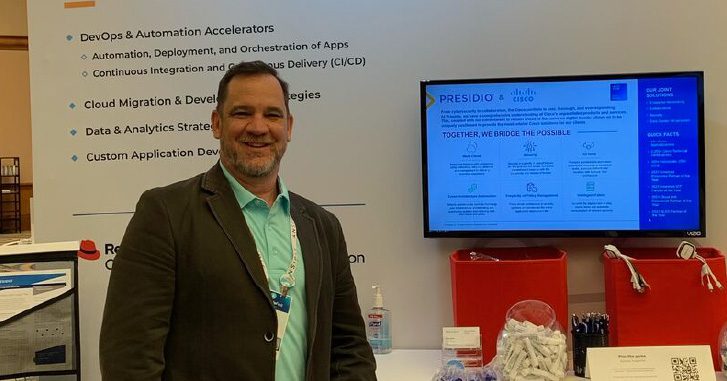

In recent years, the advent of Generative AI (GenAI) brought the concept of artificial intelligence to the mainstream. Unlike traditional AI models, including predictive AI, GenAI has broadened the appeal of AI technology through the increasing popularity of tools like OpenAI’s ChatGPT, Anthropic, Google Bard, and others, making it more accessible than ever before.
According to eMarketer, GenAI tools have netted some 80 million users (about twice the population of California) since the 2022 release of ChatGPT. This adoption rate was faster than the rate for smartphones and tablets in a comparable two-year time frame.
Despite their rising popularity, GenAI tools are only a subset of the broader AI landscape, which includes several other models that can be used for business applications.
Understanding how to use AI for business and how to think about GenAI versus AI can help you optimize your operations.
Understanding Traditional and Predictive AI
Traditional AI is a bucket term for AI models that are non-generative. One of the most prominent forms of traditional AI is predictive AI. Sometimes, the terms are used interchangeably, but traditional AI applies to any model that analyzes and automates based on existing data rather than generating new content.
Traditional AI’s power lies in its ability to automate routine tasks, which can enhance decision-making processes and improve predictive capabilities.
Subsets of traditional AI include:
- Predictive AI: Evaluates multi-attribute data to determine either a likely outcome (% probability) as well as predicting prices, time or other continuous values. For example, predicting disease probability in healthcare or in real estate to forecast property prices.
- Robotic Process Automation, or RPA: Automates repetitive tasks to drive productivity, common in financial services for transaction processing.
- Forecasting: Used for budgeting and P&L forecasting, manufacturing forecasting, and more.
- Fraud Analysis: Identifies irregularities in high-volume transactions to identify outliers and are commonly used in financial services. This can create benchmarking to determine where outcomes deviate from the standard.
- Clustering: Powering engines that recommend products or content, as seen with platforms like Amazon and Netflix.
- Object Extraction: AI models have been extracting objects, labeling objects, counting objects, in real-time video/audio streams or batch images for years and can be used across many applications, including:
- Video surveillance cameras that can spot humans, animals, and objects.
- Facial recognition and biometric analysis; and
- Counting items (e.g., in a railyard, on a street, or in a crowd).
Understanding RPA vs AI
Robotic Process Automation (RPA) is often grouped under the broader umbrella of artificial intelligence technologies, but it serves a more specific function. While AI encompasses a range of technologies that can learn and make decisions, RPA is designed to automate repetitive and rule-based tasks. This leads to the question, “Is RPA AI?” Technically, yes, RPA is a form of AI, but it does not engage in learning or decision-making processes that characterize more advanced AI systems.
What’s the Difference Between GenAI and RPA?
GenAI excels in creating new data and insights by leveraging existing information, demonstrating both creativity and adaptive intelligence. On the other hand, RPA focuses on automating routine tasks through fixed rules, lacking the ability to interpret or generate new data. Recognizing these differences is essential for businesses to determine which technology aligns best with their objectives for innovation and operational efficiency.
The Emergence of Generative AI
GenAI is reshaping how we handle data by using advanced deep learning to generate new data and ideas, resulting in unique content, trend forecasting, and faster decision-making.
GenAI is sparking creativity and innovation in the business world, with applications across the entire company. For example, in marketing, GenAI can produce specific messages and dynamic ad variants to be used in A/B testing. GenAI can also improve product design by suggesting enhancements and new features. In customer service, it uses natural language processing to personalize responses and proactively address customer needs.
Familiarity with GenAI is on the rise, but not all business leaders truly know what makes it different from other AI models. Companies need to understand the nuances between generative AI versus predictive AI.
What’s the Difference Between Generative AI and Traditional AI?
Knowing when to apply generative AI versus traditional AI models can be instrumental in making your business more efficient and innovative.
Generative AI vs. Traditional AI |
||
| Generative AI is a type of artificial intelligence that creates new content, like text or images, by learning from existing data. Traditional AI follows predefined rules to perform specific tasks, using data and algorithms to mimic human decision-making. | ||
| Generative AI | Traditional AI | |
| What it does | Create new content from existing data | Uses pre-defined rules to mimic human decision-making |
| Sample applications |
|
|
| Strengths |
|
|
| Limitations |
|
|
Here’s a quick guide to help you understand the best situations to use GenAI versus traditional AI:
- Creativity and Versatility: If your goal is to generate new content or innovative solutions, GenAI is the preferred choice.
- Simplification and Automation: For streamlining operations and automating complex processes, traditional AI models might be more effective.
- Predictive Needs: Traditional AI is indispensable for scenarios where precise, repeatable outcomes are required, such as in financial forecasting or quality control in manufacturing.
Generative AI for Business
Generative AI has transformative applications across various teams, revolutionizing traditional processes and introducing innovative solutions tailored for specific needs. Some examples include:
- Code development: Assisting developers with automated code generation.
- Productivity co-pilots: Using GenAI platforms to analyze data, summarize information, or optimize a schedule based on user inputs
- Content creation: Powering marketing and communications strategies with dynamic content creation tools.
- Natural Language Processing (NLP): Improving customer service and engagement through advanced chatbots and virtual assistants.
- Semi-autonomous process automation: Using technology to handle tasks with some human guidance or intervention via RPA and agent-based AI workloads.
Search-augmented solutions that provide summarization, quality assurance (QA) and chat experiences of your data. (Link RAPIDStarts)
Industry-Specific Applications for GenAI
GenAI boasts a wide array of applications across multiple industries, each customized to address unique needs and challenges. The following examples offer a glimpse into how GenAI is employed, though they merely scratch the surface of its vast potential across various sectors:
- Healthcare: Assisting with diagnostic processes and personalized medicine.
- Finance: Enhancing fraud detection and customer service operations.
- Entertainment: Generating creative content for digital media.
- Manufacturing: Streamlining supply chain management and predictive maintenance.
GenAI Limitations and Challenges
Despite its advantages, GenAI has its limitations, such as its “black box” nature, making it difficult to audit or understand how decisions are made. Additionally, its performance can vary, and the costs associated with deploying sophisticated GenAI solutions can be prohibitive.
Businesses can look to traditional AI models to solve issues where GenAI limitations exist, which include:
Inconsistent business practices
Financial tasks like forecasting and detecting fraud require consistent, repeatable processes that produce the same results under the same conditions. However, GenAI often operates as a black box, meaning it’s unclear how it arrives at its conclusions. Additionally, GenAI models are non-deterministic, possibly delivering different outcomes with the same inputs. This variability might work for creative tasks like writing stories or coding, but it poses risks in critical areas like medical applications, manufacturing, and safety where consistency is crucial
Cost concerns
Although GenAI models that handle text, audio, video, and images can perform many tasks traditional AI models do, they can be more expensive to operate. For instance, employing GenAI for large-scale manufacturing, fraud analysis, or image classification can be costly. These models often charge based on data usage, and these costs can quickly add up.
Performance
Using tools like ChatGPT involves inputting data and waiting for a response, which can take several seconds. However, many businesses need faster data processing, requiring responses in less than a second. Some GenAI models do not meet these speed requirements for business automation.
Future of GenAI
According to Forrester research, generative AI could have an average annual growth rate of 36% up to 2030, which would make up some 55% of the AI software market. In addition, Goldman Sachs has predicted that AI investment could amass 2.5% to 4% of U.S. total GDP.
As AI keeps changing, it’s important for businesses to know the nuances between GenAI versus AI. Presidio is at the forefront of this transformation, offering expertise that helps businesses leverage the right AI solutions for many applications.
Explore Presidio’s AI solutions and connect with our team to discover how to use AI for business.

















































































































































































































